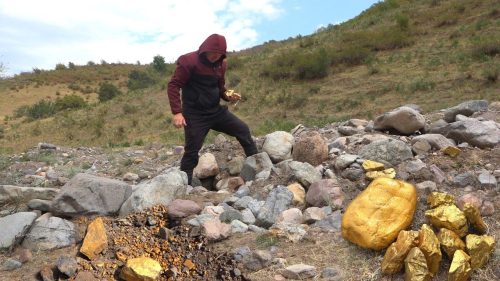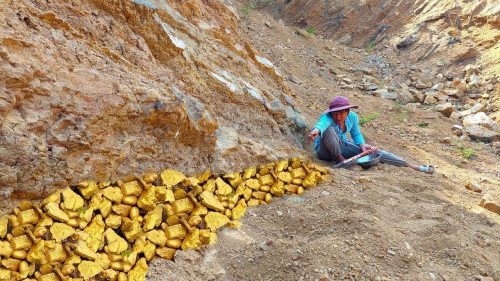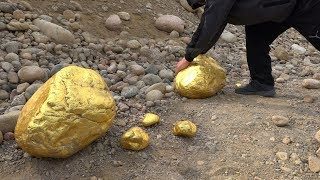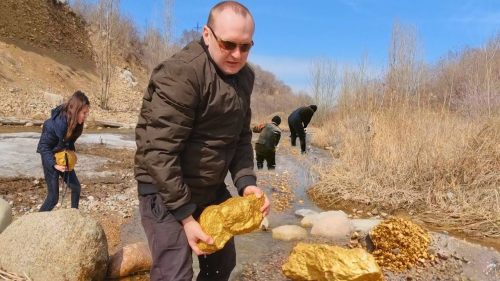
In the world of precious metals and mineral exploration, few discoveries can match the sheer awe-inspiring magnitude of a 100-kilogram gold nugget. Such a find is not only a testament to the Earth’s geological treasures but also a striking reminder of the allure of gold that has captivated humans for centuries. In this article, we delve into the astounding discovery of the enormous 100-kilogram gold nugget and its significance in the world of geology, mining, and beyond.
The Historical Context of Gold
Gold has played a pivotal role in human history for thousands of years. Revered for its beauty, rarity, and enduring value, gold has been sought after by civilizations spanning from ancient Egypt to modern-day economies. Its use has evolved from crafting ornate jewelry and coins to becoming an essential component in advanced technology, including electronics and aerospace applications.
Gold’s presence in the Earth’s crust is limited, making it a precious and finite resource. The pursuit of this precious metal has driven explorers, miners, and prospectors to the far corners of the globe. This quest has led to numerous gold rushes, the colonization of regions, and the establishment of mining towns. And occasionally, it results in remarkable discoveries that capture the world’s attention.

The 100-Kilogram Gold Nugget: A Record-Breaking Find
In recent years, the world was stunned by news of the discovery of a colossal 100-kilogram gold nugget, shattering previous records and rekindling the excitement of the gold rush era. This remarkable find occurred in a remote and unassuming location, emphasizing the unpredictable nature of mineral exploration.
Geological Formation
Understanding how such an immense gold nugget could form requires a glimpse into the geological processes that shape our planet. Gold nuggets like this one typically originate deep within the Earth’s crust in hydrothermal veins. Over millions of years, tectonic forces and volcanic activity force these veins closer to the surface. As the Earth’s crust undergoes erosion and weathering, these veins can be exposed, and gold nuggets may become dislodged and transported by water.
The Formation of Monumental Nuggets
The formation of colossal gold nuggets, like the 100-kilogram specimen, is a rare occurrence. It requires a unique combination of geological conditions and processes. To understand how such nuggets can reach such a size, we must consider a few factors:

Gold Concentration: The presence of exceptionally high concentrations of gold within the hydrothermal vein is a crucial factor. In some instances, the gold-rich fluids that flow through these veins can lead to the rapid growth of gold crystals, eventually forming nuggets.
Time and Pressure: The longer the gold remains within the vein, the larger it can grow. This extended growth period, coupled with significant pressure, can result in the development of enormous nuggets.
Tectonic Activity: Geological movements, such as earthquakes or volcanic eruptions, can play a role in dislodging gold nuggets from their original location and pushing them closer to the surface.
Discovery and Impact
The discovery of the 100-kilogram gold nugget was a serendipitous moment in the world of mineral exploration. Miners, equipped with modern technology and geological expertise, stumbled upon this colossal nugget in a region known for its historical gold production.
The impact of this discovery has been far-reaching. It has reignited interest in gold prospecting and mining in regions previously considered less lucrative. Investment in mining operations has surged, leading to economic growth in the local community and beyond. Moreover, the scientific community is eager to study this extraordinary find to gain insights into the geological processes that created it.
Challenges and Ethical Considerations
While the discovery of a 100-kilogram gold nugget is undeniably remarkable, it also raises ethical and environmental questions. Mining operations, especially in remote or sensitive areas, can have significant ecological consequences. It is crucial for the industry to adopt sustainable practices and prioritize environmental preservation.

Furthermore, the equitable distribution of wealth generated by such discoveries is an ongoing concern. It is essential that the benefits reach the local communities and contribute to their long-term development rather than solely benefiting large corporations.
Conclusion
The discovery of a 100-kilogram gold nugget is a testament to the enduring allure of gold and the marvels of Earth’s geological processes. It reminds us of the ongoing human quest for precious resources, the importance of responsible mining practices, and the need for equitable distribution of wealth.
As we continue to explore the depths of our planet and uncover its hidden treasures, we must do so with a sense of stewardship, ensuring that the legacy of such discoveries extends far beyond the glittering surface of gold and into the realms of sustainable development and scientific understanding.






